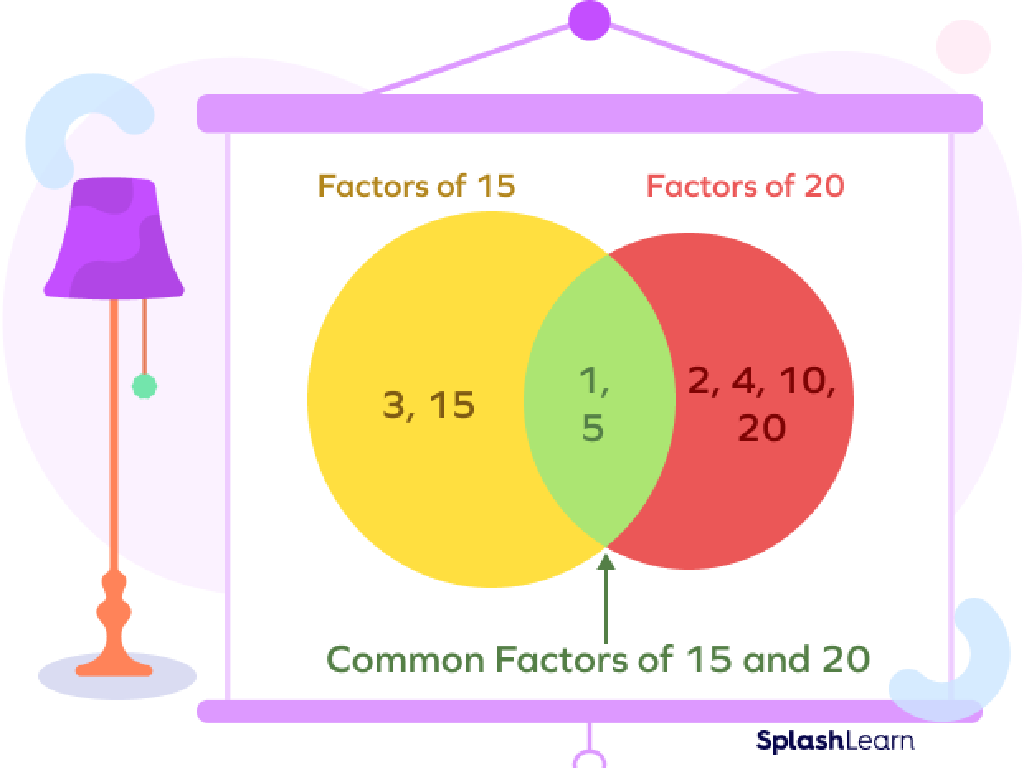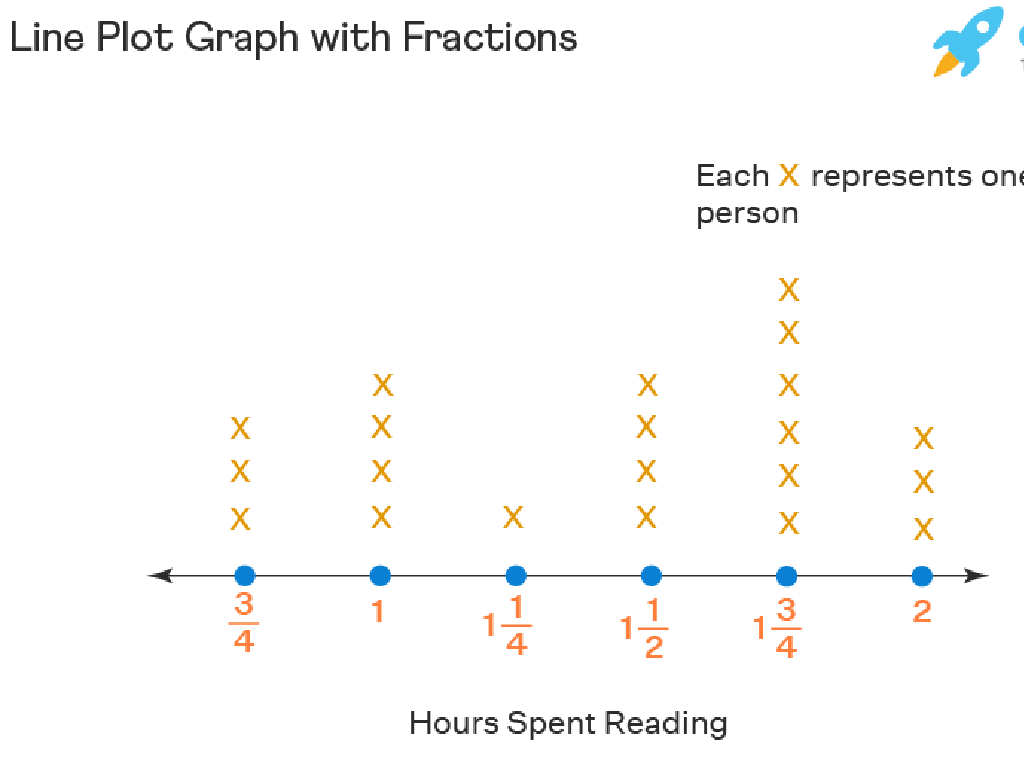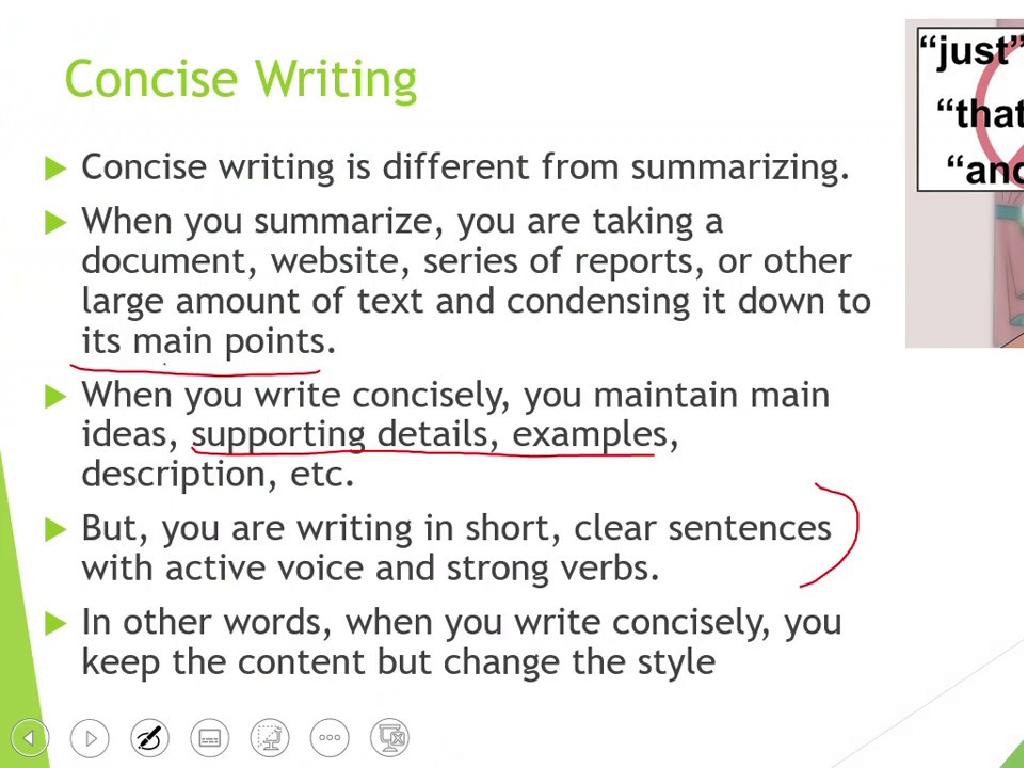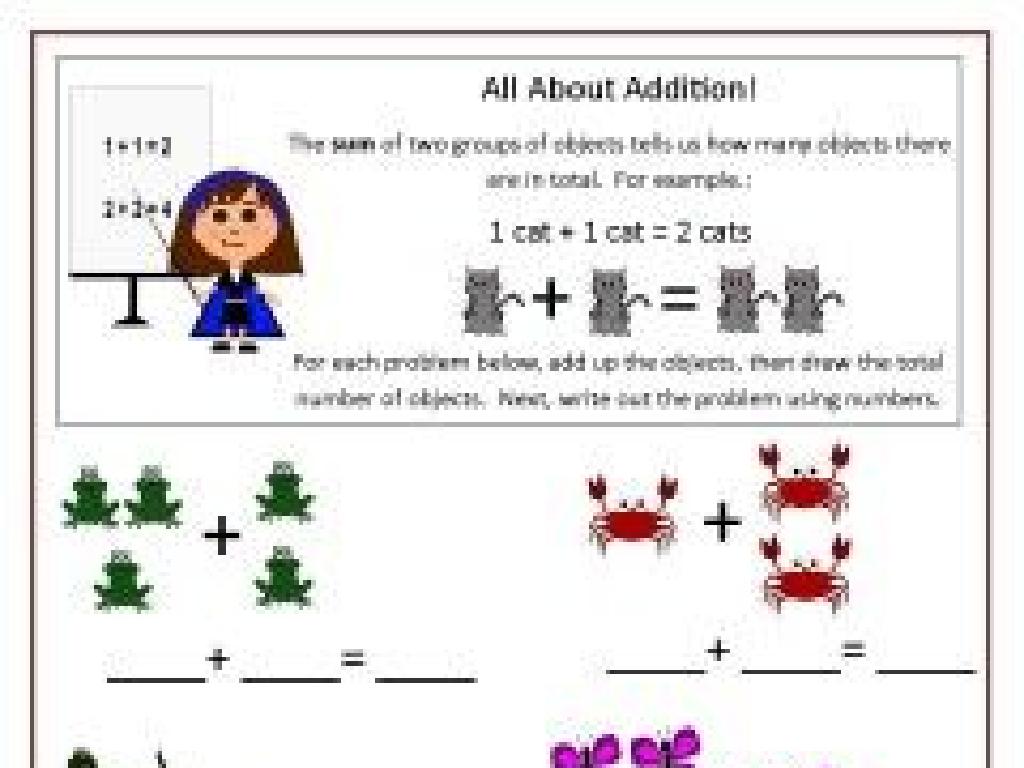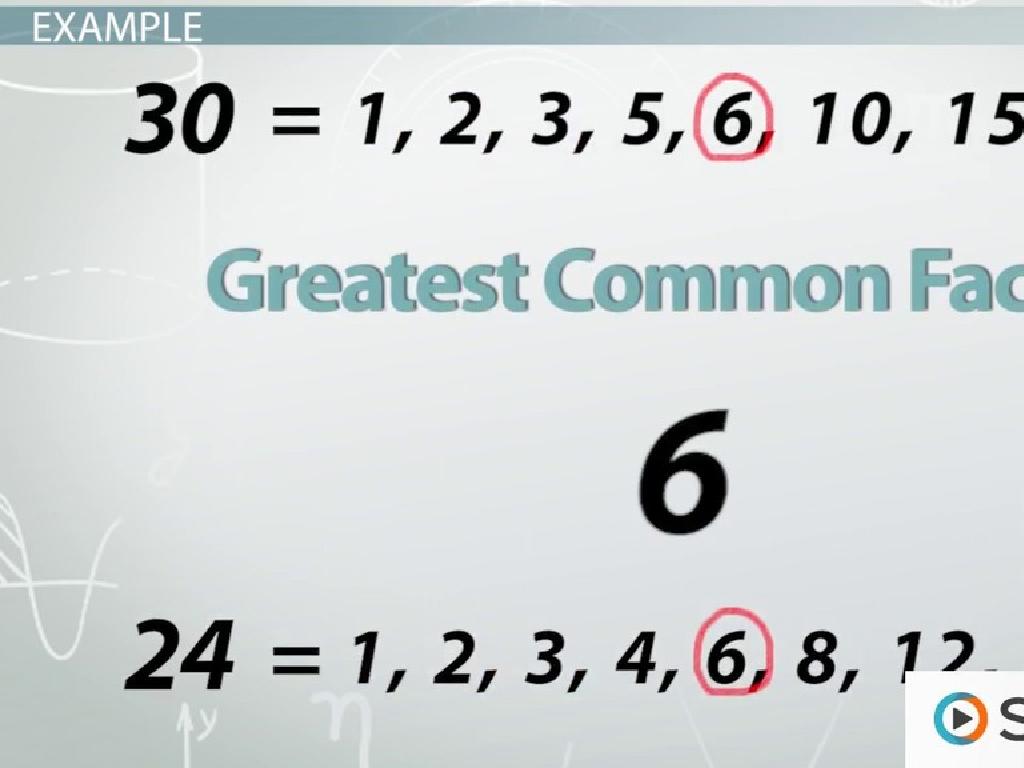Compare Amplitudes And Wavelengths Of Waves
Subject: Science
Grade: Fifth grade
Topic: Force And Motion
Please LOG IN to download the presentation. Access is available to registered users only.
View More Content
Welcome to Waves: Exploring Wave Basics
– Waves in our daily life
– Waves are everywhere: sound, ocean, light
– Defining waves
– Waves carry energy through space or matter
– Connection between waves, force, and motion
– Waves are created by forces and show motion
– Comparing amplitude and wavelength
– Amplitude is wave height; wavelength is wave length
|
This slide introduces students to the concept of waves and their significance in the world around us. Begin by discussing examples of waves they might already be familiar with, such as sound waves, ocean waves, or light waves. Explain that waves are a way energy moves through space or matter. Highlight the relationship between waves and the forces that create them, as well as how they demonstrate motion. Finally, touch on the key terms ‘amplitude’ and ‘wavelength,’ explaining that amplitude refers to the height of the wave from its rest position, while wavelength is the distance between two consecutive similar points on the wave, like crest to crest or trough to trough. Use diagrams to illustrate these concepts if possible. Encourage students to think of questions or examples of waves they have observed.
Exploring Waves: Types and Examples
– What is a wave?
– A wave carries energy from one place to another.
– Types: Mechanical & Electromagnetic
– Mechanical waves need a medium; electromagnetic waves do not.
– Everyday wave examples
– Sound waves in music, light waves from the sun.
– Comparing waves
– Look at differences in height (amplitude) and spacing (wavelength).
|
Begin with a simple definition of a wave as something that carries energy from one place to another. Explain that there are two main types of waves: mechanical, which require a medium like water or air to travel through, and electromagnetic, which can travel through the vacuum of space. Provide relatable examples such as sound waves from an instrument or light waves from the sun. Encourage students to observe waves around them and think about their characteristics. Introduce the concepts of amplitude and wavelength, setting the stage for comparing these aspects of different waves in subsequent slides or activities.
Exploring the Parts of a Wave
– Identify parts of a wave
– Crest is top, trough is bottom, wavelength is crest to crest distance, amplitude is height from rest to crest.
– What is a wave cycle?
– One complete wave cycle includes one crest and one trough.
– Understanding wavelength
– Wavelength is the distance between two consecutive crests or troughs.
– Understanding amplitude
– Amplitude is the height of the wave from its rest position.
|
This slide aims to help students visualize and understand the different parts of a wave, which is a fundamental concept in the study of waves under the topic of force and motion. Start by explaining the crest as the highest point of a wave and the trough as the lowest. The wavelength is the distance from one crest to the next, and amplitude is the measure of how ‘tall’ a wave is from its resting position. A wave cycle is one full wave, including both a crest and a trough. Use diagrams to illustrate these concepts and provide examples, such as water waves, to make the information relatable. Encourage students to draw their own waves and label the parts to reinforce their understanding.
Exploring Amplitude of Waves
– What is wave amplitude?
– Amplitude is wave’s height from rest to crest.
– Amplitude’s role in energy
– Higher amplitude means more energy in the wave.
– Amplitude in everyday life
– Loud sounds vs soft sounds show amplitude difference.
– Observing amplitude changes
|
This slide introduces the concept of amplitude in waves and its significance in understanding wave behavior. Amplitude is the height of the wave from its resting position to the top of the crest. It’s crucial to explain that the greater the amplitude, the more energy the wave carries. This can be illustrated with real-life examples such as the difference between loud and soft sounds, where a loud sound has a higher amplitude. Encourage students to think of other examples where they can observe the amplitude of waves, such as ripples in water. Discuss how amplitude affects the energy of waves in various scenarios, reinforcing the concept with practical observations.
Exploring Wavelengths of Waves
– Understanding Wavelength
– Wavelength is the distance between two peaks of a wave.
– Wavelength vs. Frequency
– As wavelength increases, frequency decreases.
– Wavelength in Daily Life
– Ocean waves, sound waves, and light waves show wavelength.
– Measuring Wavelength
|
This slide introduces the concept of wavelength as a key characteristic of waves, which is particularly relevant in the study of force and motion. Start by defining wavelength in simple terms, such as the distance from one wave crest to the next. Explain that wavelength and frequency are inversely related; as one goes up, the other goes down. Provide relatable examples like the distance between ocean wave crests or the difference in wavelengths of various colors of light. Encourage students to think about how wavelength can be measured in real-life scenarios. The goal is to help students visualize and understand the concept of wavelength and its significance in the context of different types of waves they encounter in their daily lives.
Comparing Amplitude and Wavelength
– Amplitude vs. Wavelength
– Amplitude is wave’s height; wavelength is distance between peaks.
– Measuring Amplitude & Wavelength
– Use a ruler for amplitude (from rest to peak), and for wavelength (peak to peak).
– Interactive Example
– We’ll identify these in class with a fun activity.
– Significance in Wave Properties
– Understanding these helps predict wave behavior and energy.
|
This slide aims to help students differentiate between amplitude and wavelength, two fundamental properties of waves. Amplitude refers to the height of the wave from its rest position to the peak, indicating the wave’s energy. Wavelength is the distance from one peak to the next, determining the wave’s frequency. Measuring these properties requires a simple ruler or measuring tape. The interactive example can be a hands-on activity where students use a rope to create waves and measure these properties. Emphasize the importance of understanding amplitude and wavelength in predicting how waves move and transfer energy, which is crucial in various scientific applications such as sound waves, light waves, and oceanography. Encourage students to think about real-life examples where wave properties are important, like in music and communication technologies.
Activity: Wave Simulation
– Create your own waves using materials
– Use a rope or slinky to simulate waves
– Observe changes in amplitude
– Make waves with different heights to see amplitude
– Notice differences in wavelength
– Create waves that are close together and far apart
– Record observations and conclusions
– Write down what you see and what you learn
|
This hands-on activity is designed to help students visualize and understand the concepts of amplitude and wavelength in waves. Provide each student or group with a rope or slinky. Demonstrate how to create waves and guide them to observe how the height of the wave changes as they adjust the amplitude. Then, have them adjust the frequency to see how the wavelength becomes longer or shorter. Encourage students to record their observations on how the amplitude and wavelength change with different motions. Possible activities include comparing large vs. small amplitudes, long vs. short wavelengths, and discussing how energy is related to these wave properties. This will solidify their understanding of the key concepts of wave behavior in a tangible and interactive way.
Class Activity: Measuring Waves
– Understand amplitude and wavelength
– Work in pairs to create waves
– Use a rope or slinky to make waves together
– Measure your waves’ features
– Use rulers to measure the height and distance
– Present findings to the class
|
This activity is designed to help students visually and physically understand the concepts of amplitude and wavelength in waves. Students will work in pairs, using tools like ropes or slinkies to create waves. They will then measure the amplitude (height of the wave) and the wavelength (distance between two peaks) using rulers or measuring tapes. After the activity, students will share their findings with the class, discussing the differences and similarities they observed. This will reinforce their understanding of the concepts and allow them to see the practical application of these measurements. Possible activities include varying the tension in the rope to create different amplitudes or measuring how the wavelength changes when the frequency of the wave is altered.
Wave Wonders: Recap and Review
– Recap wave properties
– Waves have amplitude, wavelength, frequency, and speed.
– Significance of amplitude & wavelength
– Amplitude affects loudness/volume, wavelength affects pitch/color.
– Engage in Q&A session
– Summarize today’s learning
– Let’s review key points and clarify doubts.
|
This slide aims to consolidate the students’ understanding of wave properties, emphasizing the importance of amplitude and wavelength. Begin by recapping the characteristics of waves, including amplitude, wavelength, frequency, and speed. Explain how amplitude relates to the energy of a wave and can influence the loudness of a sound or the brightness of a light. Discuss how wavelength affects the pitch of a sound or the color of light. Engage the class in a Q&A session to assess their comprehension and address any misconceptions. Conclude by summarizing the key concepts learned today, ensuring students can differentiate between amplitude and wavelength and understand their significance in the context of waves.

